Victor Erice’s El Sur (1983): Criterion Blu-ray review
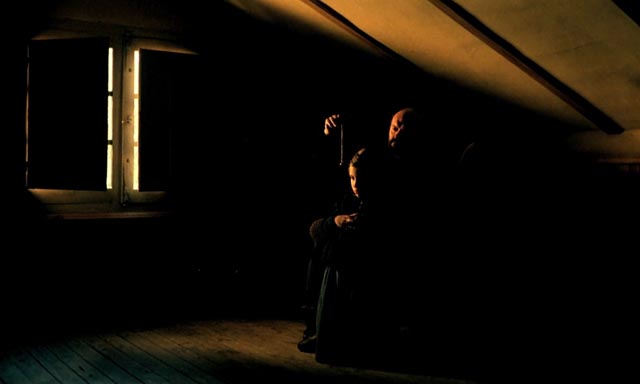
One of the problems with the instant access we now have to seemingly unlimited quantities of information is that it too often deprives us of the experience of discovery. It seems that before we see a movie, read a book, listen to a piece of music now we have already absorbed the experience vicariously through the ubiquitous presence of reviews and commentary, so that even a new work seems to echo what we already know. Which is why I try as much as possible not to read anything about a new movie or book before I have a chance to see or read it for myself … although even then, something has usually already seeped through.
Which is why I’d suggest that no one read this particular review before watching Victor Erice’s El Sur (1983), because whatever I have to say can only spoil the experience of discovery for those who know nothing of this film. I knew nothing about it before watching it and it became one of the most exhilarating viewing experiences I’ve had in years. This exquisite, mysterious film – like Erice’s enigmatic first feature, The Spirit of the Beehive (1973) – captures moods and emotions so rich and intense that the viewer seems absorbed into a world completely imagined, even though the film gives us only glimpses and fragments which offer elliptical suggestions rather than the kind of narrative clarity required by mainstream cinema.
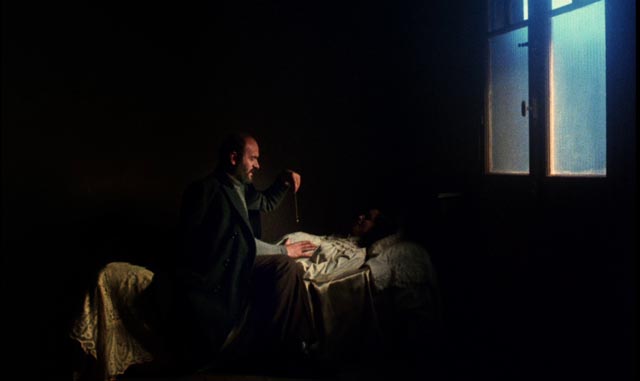
Like The Spirit of the Beehive, El Sur presents a world perceived from a child’s point of view. It is about the wonder of discovery and the pain of disillusionment. Once again, the central character is a young girl – here, Estrella (Sonsoles Aranguren), who lives at a rambling house on the border between town and country, with her mother Julia (Lola Cardona) and her father Agustin (Omero Antonutti), a doctor whom she believes has magical powers. Agustin is a dowser, who can reveal hidden things with a pendulum or find water with a cleft stick, and in one beautifully realized scene he teaches his daughter how to use the pendulum.
While keeping close to Estrella and her discovery of the world around her, Erice gradually reveals details of the adult world through which she moves unknowingly. This is a family damaged by its past. Agustin was born in the South and left because of conflict with his father; more than common family friction, this occurred during the Civil War, with Agustin siding with the Republicans while his father was loyal to the fascist Nationalists. Julia had been a teacher, but her suspect loyalties resulted in the victorious fascists stripping her of her qualifications. Now her only student is Estrella herself.
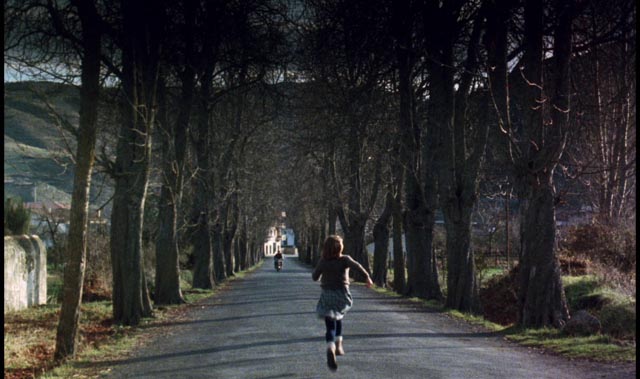
There are also divisions along gender lines, with Julia and (during a visit from the South) Agustin’s mother (Germaine Montero) and childhood nursemaid Milagros (Rafaela Aparicio) adhering to the Church while Agustin is an atheist. For Estrella, there is tension during the visit because it’s occasioned by her First Communion and she fears that her father won’t come to the church. In one of the film’s many emotionally resonant moments, after the Communion, she sees him emerge from the shadows at the rear of the church, his appearance a deeply meaningful gift to her.
It is Estrella’s particular closeness to her father that gradually cracks the child’s sense of security and opens up a frightening larger world where things can be glimpsed but not fully known. One day, Estrella finds an envelope on which is sketched a woman’s face with the name Irene Ríos written multiple times. Soon after, walking past a movie theatre in town, she sees her father’s motorcycle parked at the curb and, on the poster by the door, the name Irene Ríos. She waits across the street and sees her father come out; he walks to a cafe and through the window she sees him writing a letter. When she asks her mother if she knows the name, Julia says no – but it’s not entirely clear whether this is true.
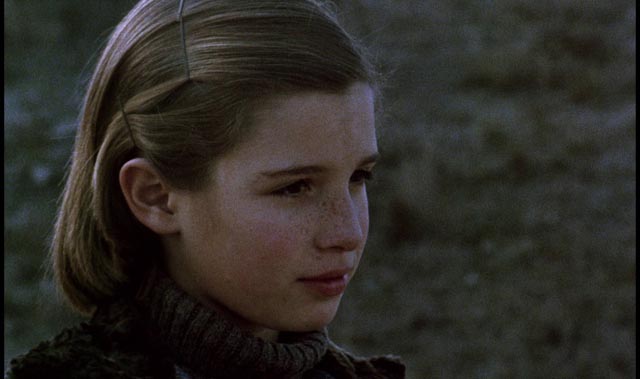
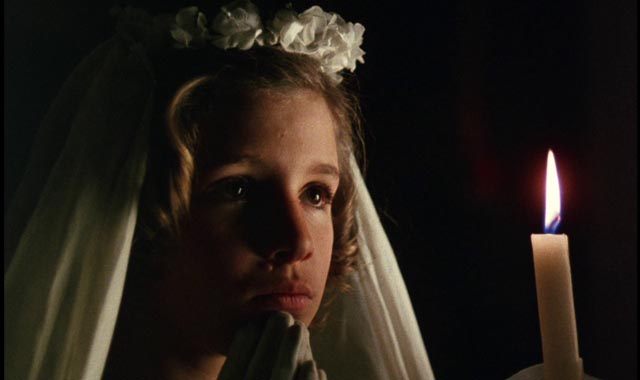
This is the beginning of Estrella’s awareness that her father’s air of solitude is rooted in an unhappiness he tries to conceal, an unhappiness which distances him from Julia, in turn creating her own isolation and unhappiness. Estrella is beginning to grow out of childhood, experiencing that strange sense of vertigo which comes when a child who has always considered that her parents are an extension of herself comes to realize not only that they are separate, but that their lives long preceded hers and are filled with secrets and mysteries which have nothing to do with her and which she may never know or understand.
Years pass and Estrella (now played by Icíar Bollaín) has become her own independent self. In perhaps the film’s strongest scene, Agustin takes her to lunch at a hotel. With the sounds of a wedding party coming from an adjoining dining room, Estrella finally asks him about Irene Ríos. The scene plays almost like a confrontation between lovers whose relationship has become irrevocably broken, a sense which is only amplified as Estrella walks away from her father for what turns out to be the last time and she pauses by the door to the other room and looks in to see the bride dancing to the same tune that she and Agustin danced to after her Communion.
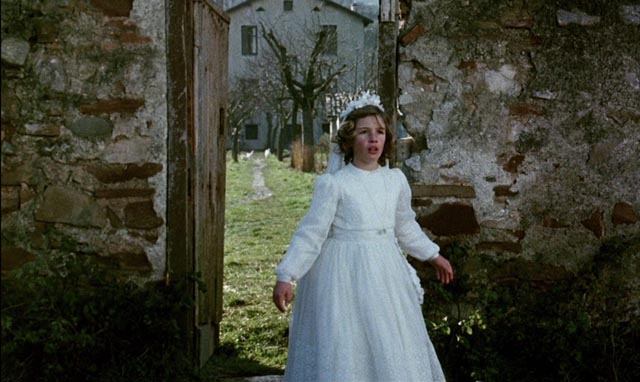
El Sur has an open-ended conclusion as Estrella prepares to travel to the South to visit her grandmother and Milagros, hoping to learn something about her father’s past, some explanation for how he became the man she idolized yet didn’t really know. That final moment is fraught with sadness and hope, a sense that she has finally become an independent self about to move out into the world beyond childhood and family.
This brief summary barely scratches the surface of this exquisite film, so full is it of resonant emotions and a sense of mystery about life and the world. And it doesn’t even hint at the aesthetic depths of Erice’s craft and the remarkable cinematography of José Luis Alcaine. Shot in all seasons, the film is steeped in a chilly northern light, drained of colour in winter, rich in earth tones in summer and fall. Interiors are composed like 17th and 18th Century paintings, evoking the use of light, shadow and colour in the work of Rembrandt, Caravaggio and Vermeer. I can think of few films with the richness of imagery created by Erice and Alcaine; the emotional impact of the film is one of sadness mitigated by an ecstatic pleasure in life and the physical world that it inhabits.
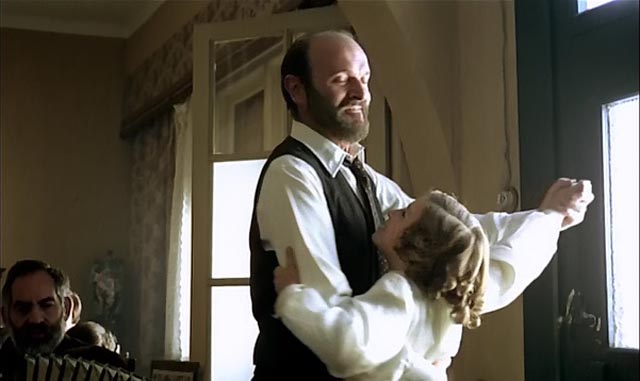
The slow pace, the moments of silence, and the painterly visual style don’t produce a static effect, but rather encourage observation of subtle details and almost imperceptible changes which occur at the edges of perception. Light is alive and constantly changing, the atmosphere within which the characters exist is palpable. Erice’s approach to visual storytelling is established from the first moments, with the opening shots of Estrella’s bedroom, the light gradually brightening while we hear off-screen action which awakens Estrella – hurrying footsteps, urgent voices, the slow realization that someone has disappeared – ending with her discovery under her pillow of the little lacquer box with her father’s pendulum inside, the significance of which we will only learn later. Although Erice’s style is highly individual, it carries echoes of other filmmakers who see the world in similar ways – the Tarkovsky of Mirror, the Terence Davies of The Long Day Closes.
Beyond the film’s visual accomplishment, Erice’s direction of the cast is crucial to the impact of El Sur. As in The Spirit of the Beehive, what he gets from his child actors is remarkable. The subtlety and range of expression of Sonsoles Aranguren particularly provides much of the film’s emotional depth; her performance is a hard act to follow, but Icíar Bollaín is convincing as the 15-year-old Estrella, more mature but less intensely self-contained. The rest of the cast provide excellent support, particularly the Italian Omero Antonutti as Agustin (a regular in Taviani Brothers films, he was nervous about taking the part because he spoke little Spanish), Lola Cardona as Julia, kept emotionally outside of the bond between her husband and her daughter, and Rafaela Aparicio, who is luminous as Milagros, closer to Agustin than his own mother, and more of a grandmother to Estrella.
*
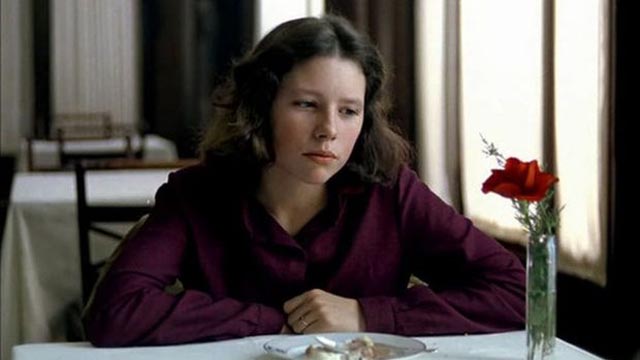
I have encountered few films as rich and absorbing as El Sur, seemingly so perfectly formed and realized with such assurance. Which makes me grateful that I knew nothing about it before watching, because as I dug into the disk’s supplements, I discovered things about the production which may well have affected my response in ways which could have undermined my pleasure.
Because for Victor Erice it is a crippled and unfinished work. This is just half the film he set out to make, based on a novella by his wife Adelaida García Morales. Estrella’s departure at the end of the film as it exists was to be the starting point for a mirroring second half set in the South where she learns about the life her father wanted but didn’t get, a life disrupted irrevocably by the devastating events of the Civil War. She would have learned about his relationship with the actress Irene Ríos, whose real name was Laura (Aurore Clément, glimpsed in brief scenes of the movie Agustin watches in the theatre), and she would have met and fallen in love with her half brother.
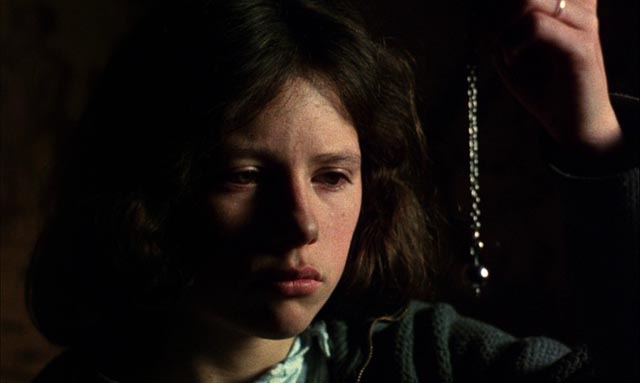
Although the supplements give conflicting information about what happened, it’s clear that after shooting the northern half of the film, using 48 of the scheduled 81 days of production, producer Elías Querejeta decided that a film could be made from the existing footage and cancelled the southern shoot. It may have been that one funding source pulled out, but there were rumours that Erice was profligate and wasted too much money (an accusation strongly denied by cinematographer Alcaine).
Erice was unhappy and didn’t want the film to be seen in this unfinished state, but the head of the Cannes Film Festival went to Spain for a screening and invited the film to the 1983 Festival, where it was nominated for the Palme d’Or. It went on to win many awards at other festivals and had an enthusiastic, positive critical reception in Spain. All of which cemented its status as a “finished” film despite Erice’s own dissatisfaction.
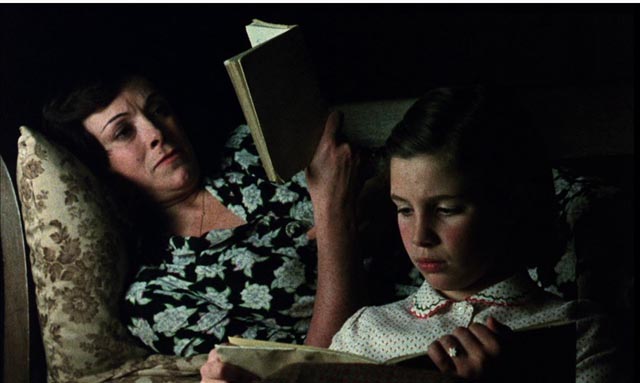
Having experienced the film as it is, I can’t really imagine the film which was not made (although Criterion helpfully include a reprint of the source novella with the Blu-ray). It would have been a bigger film, with larger themes dealing with the trauma of Spanish history and its impact on individual identity. The film as it exists is smaller and more personal; like The Spirit of the Beehive, it is a wonderful study of childhood and the gradual loss of innocence which comes with the child’s realization that the world does not exist solely for her. The world is very large and the child’s sense of self initially fills it; ironically, the world seems to shrink as the child’s identity forms and becomes separate from her parents’. Loss is an integral part of becoming, and Erice captures this devastating fact with rare sensitivity and subtlety, even more in El Sur than in the previous film.
The remarkable qualities of both these films make it seem strange that Erice has made so few films. These, his first and second features, were made a decade apart, while it was nine more years before he made another feature, the documentary The Quince Tree Sun (1992), with only shorts and parts of anthology films preceding The Spirit of the Beehive and following The Quince Tree Sun. Although I haven’t seen the latter, from what I’ve read it appears to be yet another masterpiece. Three features in a career spanning fifty-five years, made at ten-year intervals … whatever the reasons, this fact makes his films even more precious.
*
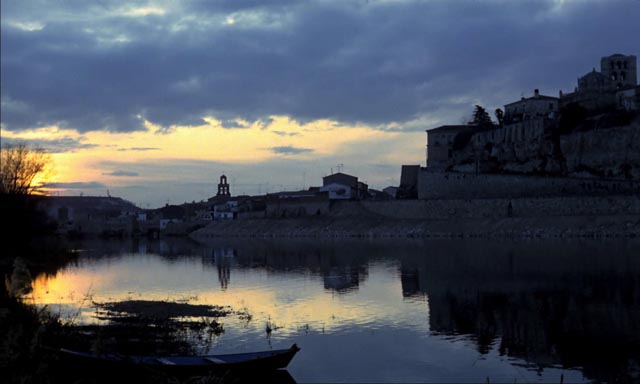
The disk
The 2K scan from a low-contrast print is breathtaking. The hi-def format supports the deep, shadowy imagery with authentic grain and very strong contrast; the strength of the visuals is almost visceral. The mono soundtrack provides clear dialogue and subtle ambiences and effects.
The supplements
As mentioned, there’s an interview with Erice from 2003 (21:22) in which he describes in detail the missing half of the film. In addition, there’s a new making-of documentary (24:29) which uses interviews recorded in 2012 with actors Antonutti, Aranguren and Bollaín, in addition to cinematographer Alcaine and camera operator Alfredo Mayo; this addresses both Erice’s working methods and the issue of the interrupted production.
Finally, there’s a Spanish television show (1:01:25), actually a wrap-around for a broadcast of El Sur in 1996, in which critics Miguel Marias, Miguel Rubio and Juan Cobos discuss the film at length, its position in Erice’s work, the troubled production history, and their personal responses to the film, which they all hold in very high regard. It’s clear that, despite Erice’s own conflicted feelings about the film, it is revered as one of the masterpieces of Spanish cinema.
The booklet essay is by Spanish novelist and critic Elvira Lindo, and as mentioned a reprint of the 44-page source novella is also included. Not only does this provide some insight into the missing second half, it also illuminates Erice’s artistry through the changes he made in his adaptation; while the narrative broadly follows the source, tone and emphasis are altered through his selection of the moments he dramatizes, by what he has discarded or compressed or invented, and most importantly by his replacement of Adelaida García Morales’ words with his own indelible imagery.
Comments
I very much appreciate your 1st 2 paragraphs.
I find it odd previews seem to reveal more and more of the movie – good when it’s something I’ll avoid, but often I hum to myself with head down so I don’t discover too much about something I intend to see.
I look forward to reading your review after I see El Sur.